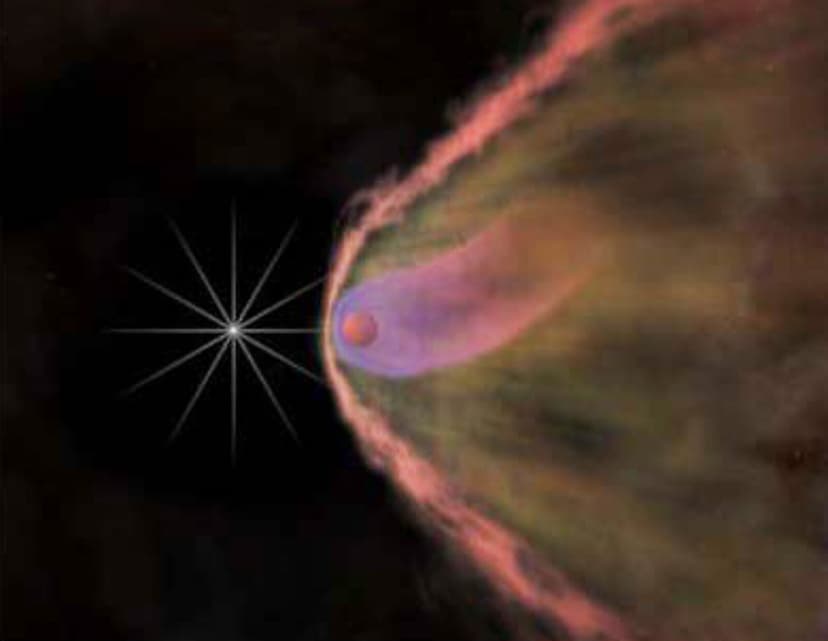Ungrateful Pulsar is Destroying Its Companion

(Originally published by Stanford University)
July 11, 2012
In the catalog of metaphorical names in astronomy, one of the most fanciful is the class of pulsars known as 'black widows'. We remember pulsars as the lighthouses of the galaxy, where the extreme magnetic field around a rapidly rotating neutron star causes dual opposing beams of particles and radiation to sweep across the sky. Many known pulsars are 'recycled' - that is they didn't wind down to insignificance over time but rather spun up to very high rotation rates by leaching accreting matter from a nearby companion star. And, we now know, some of these recycled pulsars are ungrateful enough to point a beam directly at their companion, evaporating its material and heating up the side of the companion facing the beam to incredible temperatures.

Artist's conception of a black widow pulsar system. Courtesy: KIPAC
Previously, KIPAC professor Roger Romani and graduate student Michael Shaw used the changing brightness of a companion star to identify an unclassified gamma-ray emitter seen by the Fermi Gamma-ray space telescope as a black widow pulsar. This object joined 20 other black widows that have been identified partially due to Fermi's Large Area Telescope (LAT) gamma-ray observations, compared to only three known before Fermi, another example of the Fermi-LAT revolution in our understanding of the high energy Universe.
Now Romani has uncovered an even more extreme black widow, associated with the Fermi-LAT gamma-ray source known as 2FGL J1311.7-3429. Using the WIYN telescope in Arizona and the SOAR and VLT telescopes in Chile, he determined that the companion star's brightness as observed here on Earth varies by almost a factor of 200 depending on whether the side being obliterated by the pulsar's beam is facing us or not. The surface which is taking the pulsar beam abuse has been raised to a temperature of around 14,000 Kelvin, suggesting a heater with 500 times the luminosity of the Sun. It certainly takes a lot of energy to make a star appear 200 times brighter than it already is.
The mutual orbit of this pulsar-companion system, which is what alternates the side of the companion facing us, has a period of a mere 94 minutes, the shortest yet detected for a recycled pulsar. In addition to the sinusoidal fading and brightening seen in the companion star as its hot and cold sides face us, it manifests mysterious flares that can increase its brightness by an additional factor of ten. Whether the flares are due solely to processes within the pulsar or the interaction of the pulsar beam with the companion, or both, is an intriguing question which can only be answered by further study of this object and further discovery of other black widow systems. With gamma rays as seen by the Fermi-LAT, and other light from radio through optical and X-rays, the high energy Universe continues to surprise us.
This work is described in a paper to appear in Astrophysical Journal Letters and available from astro-ph at arXiv:1207.1736. The Fermi-LAT was designed and built by an international collaboration with members from France, Italy, Japan, Sweden and the United States. SLAC managed the construction and integration of the instrument and KIPAC is the lead for ongoing operation of the instrument. Research at KIPAC is supported by the Department of Energy, the Kavli Foundation, the National Aeronautics and Space Administration, the National Science Foundation and Stanford University, as well as private donors. We are grateful to each of these sponsors for their trust and support.